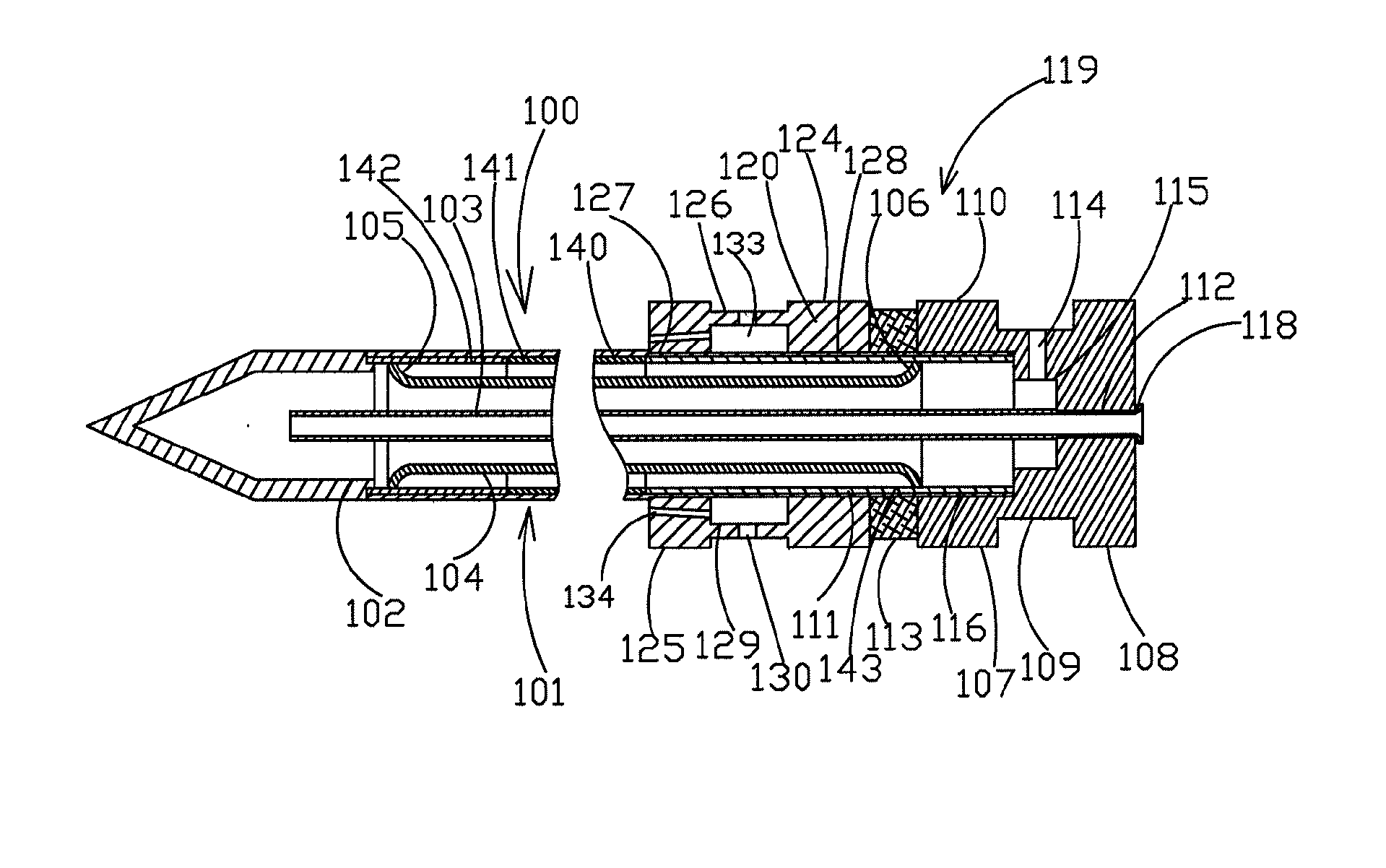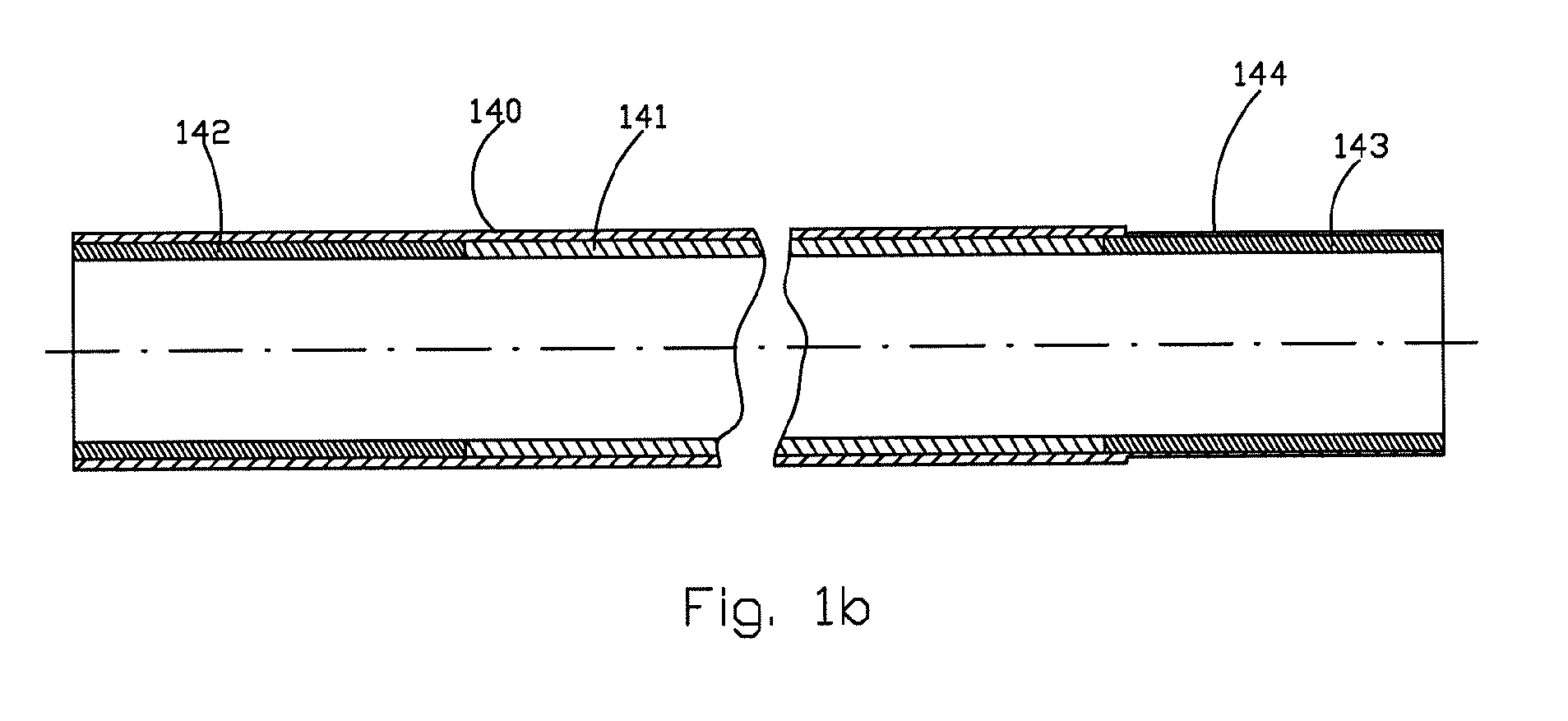Cryosurgical Instrument Insulating System
a cryosurgical and instrument technology, applied in the field of cryosurgical instrument thermal insulation, can solve the problems of not teaching or suggesting a simple and inexpensive mechanism in the background art, and achieve the effects of minimizing the propagation of formed ice balls, low specific thermal conductivity, and high specific thermal conductivity
- Summary
- Abstract
- Description
- Claims
- Application Information
AI Technical Summary
Benefits of technology
Problems solved by technology
Method used
Image
Examples
Embodiment Construction
[0041]FIG. 1 shows an axial cross-section of a cryosurgical instrument 100 according to the present invention with heating an external shaft by streams of a gaseous medium, which preferably have a high water content (ie are humidified). This embodiment of cryosurgical instrument 100 comprises the elongated external shaft 101, which terminates at its distal edge with cryotip 102.
[0042]There is a central feeding pipe 103, which is situated in shaft 103. Preferably, the proximal end of the central feeding pipe 103 protrudes from the proximal end of shaft 101. The proximal sections of the elongated external shaft 101 and the central feeding pipe 103 serve for installation of a male unit 119 for quick coupling. The extreme proximal section of the shaft 101 preferably protrudes at least partially to prevent movement past a certain point with regard to male unit 119.
[0043]Thermal insulation of the elongated external shaft 101 is ensured by an intermediate tube 104 with two flanged ends 105...
PUM
 Login to View More
Login to View More Abstract
Description
Claims
Application Information
 Login to View More
Login to View More - R&D
- Intellectual Property
- Life Sciences
- Materials
- Tech Scout
- Unparalleled Data Quality
- Higher Quality Content
- 60% Fewer Hallucinations
Browse by: Latest US Patents, China's latest patents, Technical Efficacy Thesaurus, Application Domain, Technology Topic, Popular Technical Reports.
© 2025 PatSnap. All rights reserved.Legal|Privacy policy|Modern Slavery Act Transparency Statement|Sitemap|About US| Contact US: help@patsnap.com



